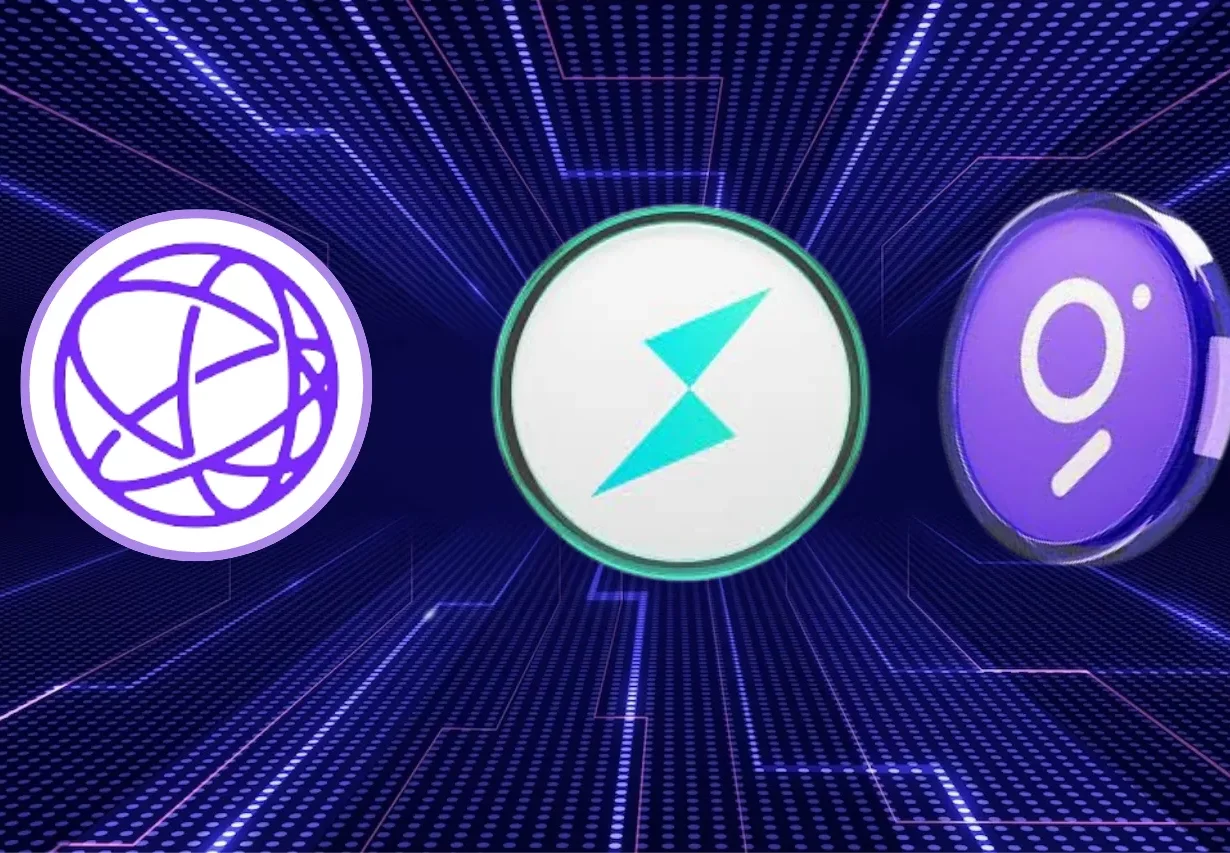In the dynamic world of cryptocurrencies, investors are always on the lookout for the next big thing. Celestia (TIA), THORChain (RUNE), and The Graph (GRT) are three contenders vying for attention. Each offers unique features and potential for growth, but how do they stack up against each other?
Celestia boasts a modular blockchain network designed to streamline the creation of decentralized apps. Meanwhile, THORChain’s decentralized liquidity network aims to revolutionize crypto trading. On the other hand, The Graph is making waves as an indexing protocol for querying blockchain data.
Choosing where to invest can be daunting, but understanding the strengths and use cases of TIA, RUNE, and GRT is the first step. Let’s dive into what sets these platforms apart and how they’re shaping the future of blockchain technology.
Celestia (TIA): A Modular Blockchain Network
Celestia pioneers the modular blockchain approach. Decentralized applications flourish on this network by separating consensus from execution. This decoupling allows Celestia to offer scalability and flexibility unheard of in traditional blockchain systems.
The core principles of Celestia hinge on its modularity, isolating the duties of a blockchain into distinct layers. Here, the key components are the consensus layer and the data availability layer, working in tandem to streamline operations.
Through this innovational separation, Celestia empowers developers, enabling them to build decentralized platforms without the labor of creating a new blockchain from scratch.
Practical applications range from improving transaction speed to lowering costs, addressing common bottlenecks in blockchain infrastructure. With such capabilities, Celestia’s relevance is only projected to climb as the sector evolves.
THORChain (RUNE): Revolutionizing Crypto Trading with Decentralized Liquidity
THORChain’s decentralized liquidity protocols allow users to swap cryptocurrencies across various networks without relying on traditional exchanges. They operate on a system that’s both permissionless and non-custodial, empowering users to trade directly from their wallets.
By utilizing Continuous Liquidity Pools (CLPs), THORChain ensures that liquidity is always available. Scalability is achieved through the innovative use of CLPs, which differ from the standard Automated Market Makers (AMMs) used in other protocols.
The cross-chain capabilities of THORChain are not only a technical novelty but also serve practical use cases, enabling seamless transfers of value between different blockchain networks. This function helps circumvent the usual barriers presented when dealing with crypto asset exchange.
THORChain stands out with its native token, RUNE, which participants use for governance and to receive a portion of the trading fees. The platform fosters a governance model that is both inclusive and democratic for token holders.
The utility and adoption of RUNE are bolstered by a strong community, which suggests potential growth in the decentralized finance (DeFi) ecosystem. THORChain’s commitment to solving liquidity issues in crypto trading positions it uniquely in the market.
The Graph (GRT): An Indexing Protocol for Querying Blockchain Data
The Graph is a decentralized protocol for indexing and querying data from blockchains. It’s designed to facilitate easy access to information that’s stored across various Ethereum-based projects without heavy reliance on traditional centralized databases.
Developers use The Graph to efficiently and securely pull data for their dApps. They do so using subgraphs, which are defined as specific data sources. This protocol’s flexibility is evident in its burgeoning ecosystem of diverse applications.
By streamlining access to blockchain data, The Graph supports a vibrant DeFi landscape. Its native token, GRT, incentivizes indexers and ensures the integrity of the data provided, highlighting its pivotal role in decentralized information services.
Comparing Celestia, THORChain, and The Graph: Strengths and Use Cases
Celestia boasts a modular framework that enhances dApp scalability. THORChain’s CLPs provide uninterrupted liquidity and cross-chain swaps. The Graph excels at data indexing for Ethereum-based projects.
| Feature | Celestia (TIA) | THORChain (RUNE) | The Graph (GRT) |
|---|---|---|---|
| Primary Use Case | Modular Blockchains | DeFi Liquidity | Data Indexing |
| Core Strength | Scalability | Cross-chain Transfers | Access to Information |
| Network Type | Decentralized | Decentralized | Decentralized |
| Community Support | Growing | Strong | Strong |
| Token Utility | DApp Development | Liquidity Provision | Indexing Rewards |
Celestia’s flexibility serves various decentralized systems, portending a surge in innovation. THORChain’s secure exchanges bolster DeFi. The Graph’s efficient data retrieval fosters DeFi growth. These unique characteristics mark them as noteworthy for blockchain enthusiasts and investors.
Shaping the Future of Blockchain Technology: TIA, RUNE, and GRT
Celestia, THORChain, and The Graph are not just cryptocurrencies; they’re innovative platforms reshaping blockchain technology’s landscape. Each employs a unique approach to addressing scalability, liquidity, and data utilization challenges.
| Feature | Celestia (TIA) | THORChain (RUNE) | The Graph (GRT) |
|---|---|---|---|
| Primary Focus | dApp Scalability | Liquidity Swaps | Data Indexing |
| Framework | Modular | CLPs | Ethereum-based |
| Innovation | Scalability Layers | Cross-chain Trading | Efficient Querying |
Celestia’s modularity paves the way for decentralized app scalability. Meanwhile, THORChain’s CLPs offer robust cross-chain liquidity without intermediaries. The Graph excels in efficiently indexing data on the Ethereum blockchain, enabling faster and more accurate queries.
The trio embodies the cutting edge of blockchain, each carving a niche that advances the field as a whole. Their growth reflects an overarching trend: the diversification and specialization of blockchain protocols. Such innovation suggests a promising trajectory for the continued evolution of this technology.
Conclusion
Celestia, THORChain, and The Graph each bring distinct advancements to blockchain technology, tackling issues from scalability to liquidity to data indexing with innovative solutions. They’re not just contributing to the current landscape but are actively shaping the future of blockchain applications. As investors and developers continue to explore these platforms, they’ll find unique opportunities and challenges tailored to their specific blockchain needs. The growth trajectories for TIA, RUNE, and GRT signal a dynamic and diversified future for the industry, where the strengths of each can lead to more robust, efficient, and user-friendly blockchain ecosystems.
Frequently Asked Questions
What is the focus of Celestia (TIA)?
Celestia centers on enhancing the scalability of decentralized applications (dApps) through its unique modular framework, aiming to streamline blockchain efficiency and improve overall network performance.
How does THORChain (RUNE) provide liquidity?
THORChain utilizes Continuous Liquidity Pools (CLPs) to facilitate uninterrupted liquidity and enable cross-chain swaps, ensuring users can easily trade assets across different blockchains.
What function does The Graph (GRT) serve in the blockchain space?
The Graph is renowned for its efficient data indexing for Ethereum-based projects, offering a vital service that enhances access to and utilization of data within the blockchain ecosystem.
How are Celestia, THORChain, and The Graph contributing to blockchain innovation?
All three platforms are spearheading innovation in the blockchain industry: Celestia by addressing dApp scalability, THORChain by solving liquidity and cross-chain trading challenges, and The Graph by optimizing data indexing on the Ethereum network.
What potential for growth do these cryptocurrencies have?
The unique features and solutions provided by Celestia, THORChain, and The Graph suggest a promising growth trajectory, as they each tackle critical challenges like scalability, liquidity, and data access within the evolving blockchain landscape.




Leave a Reply